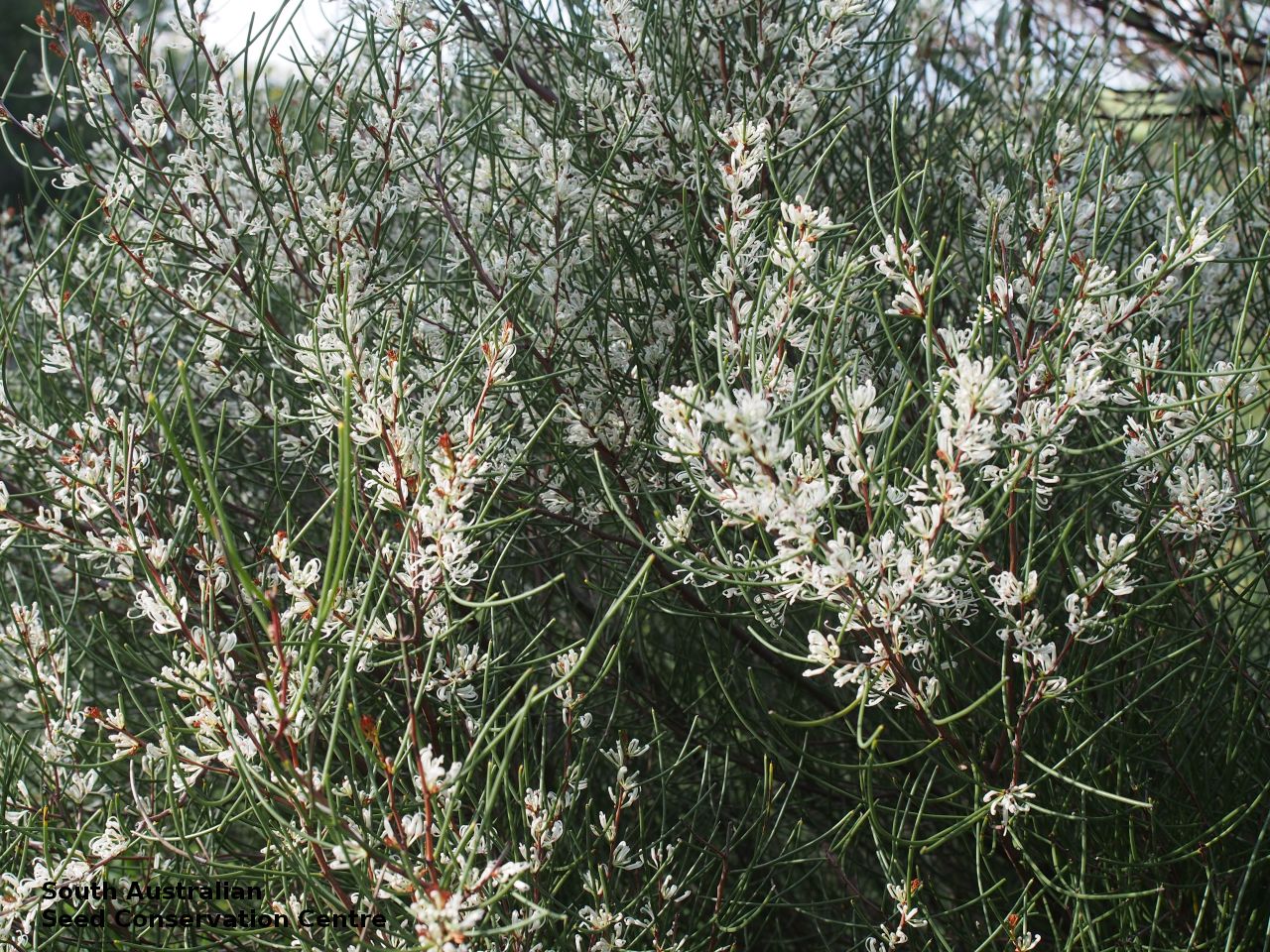
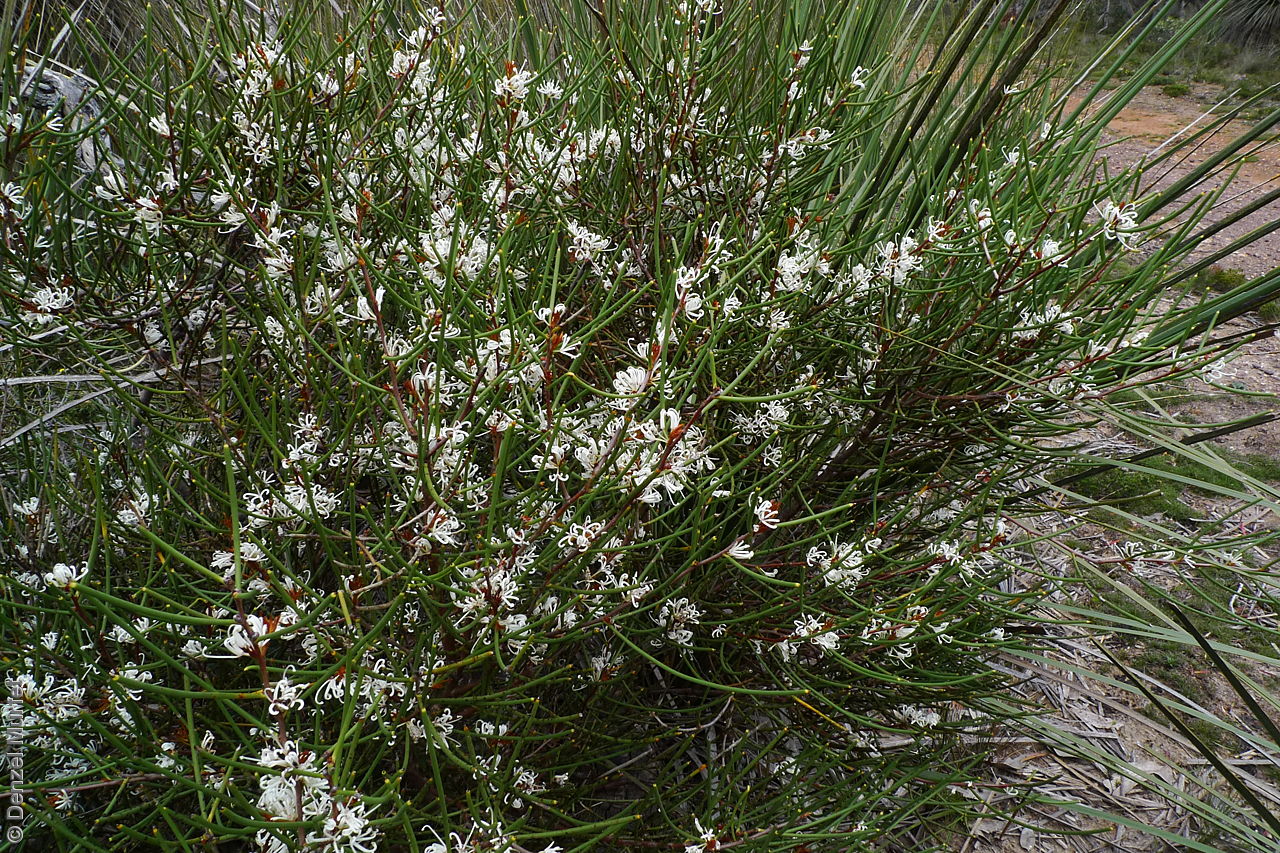
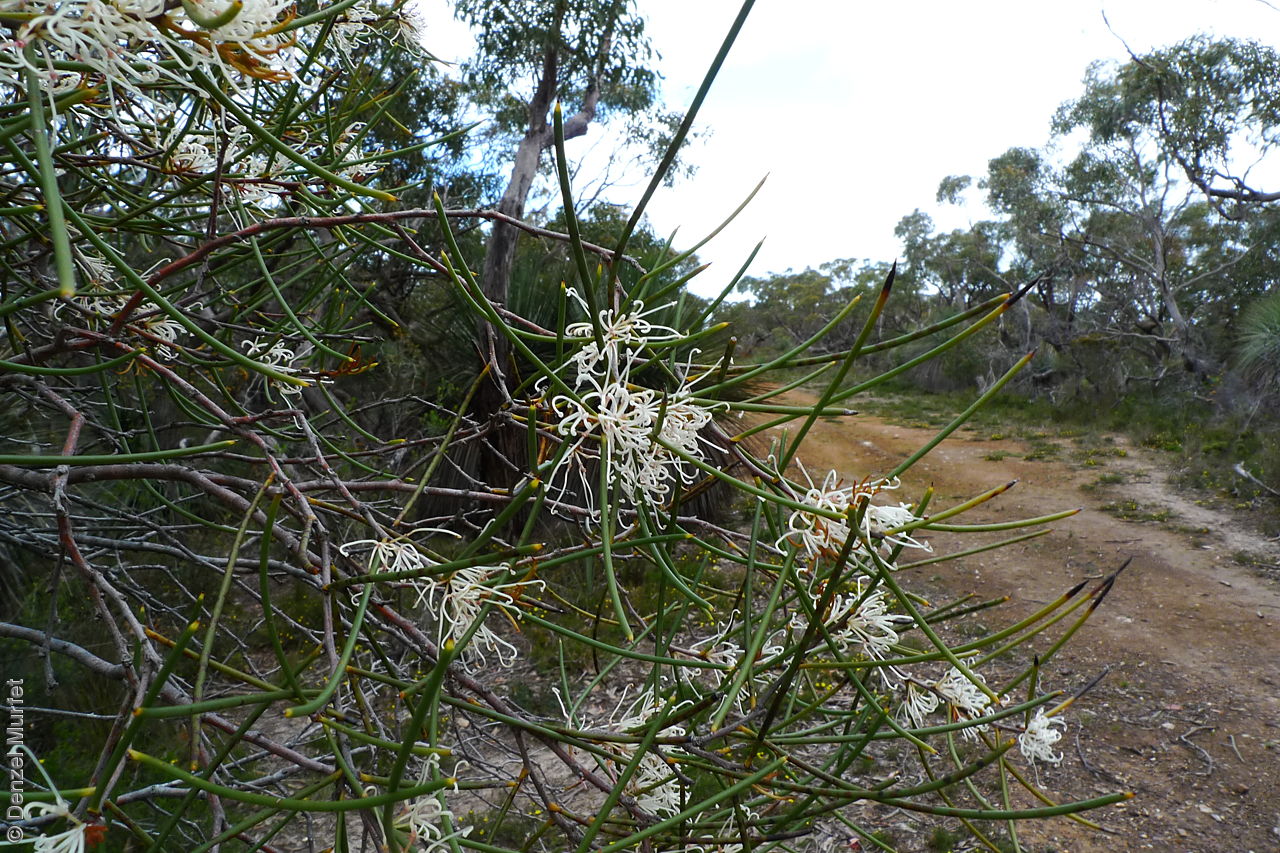
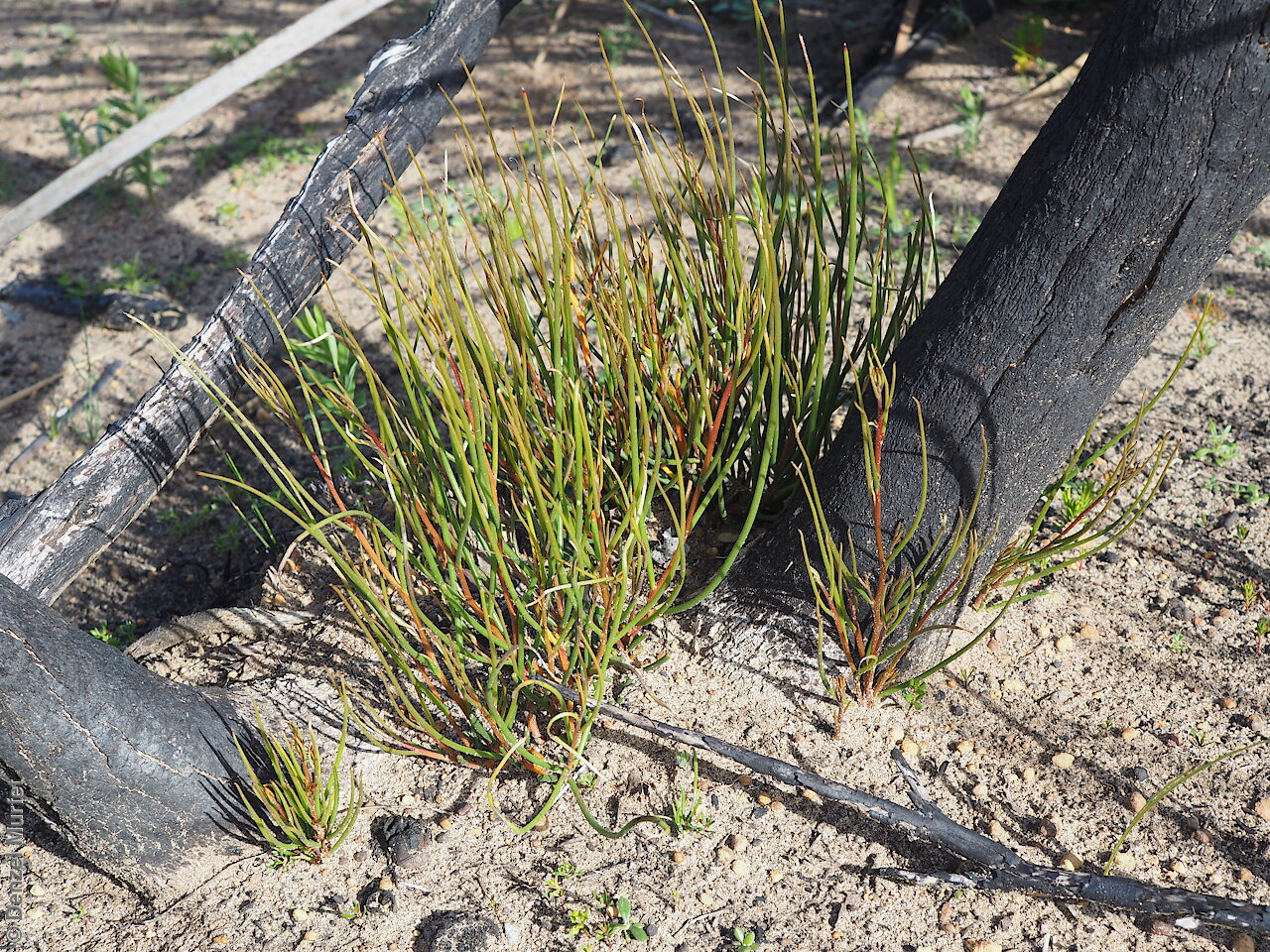
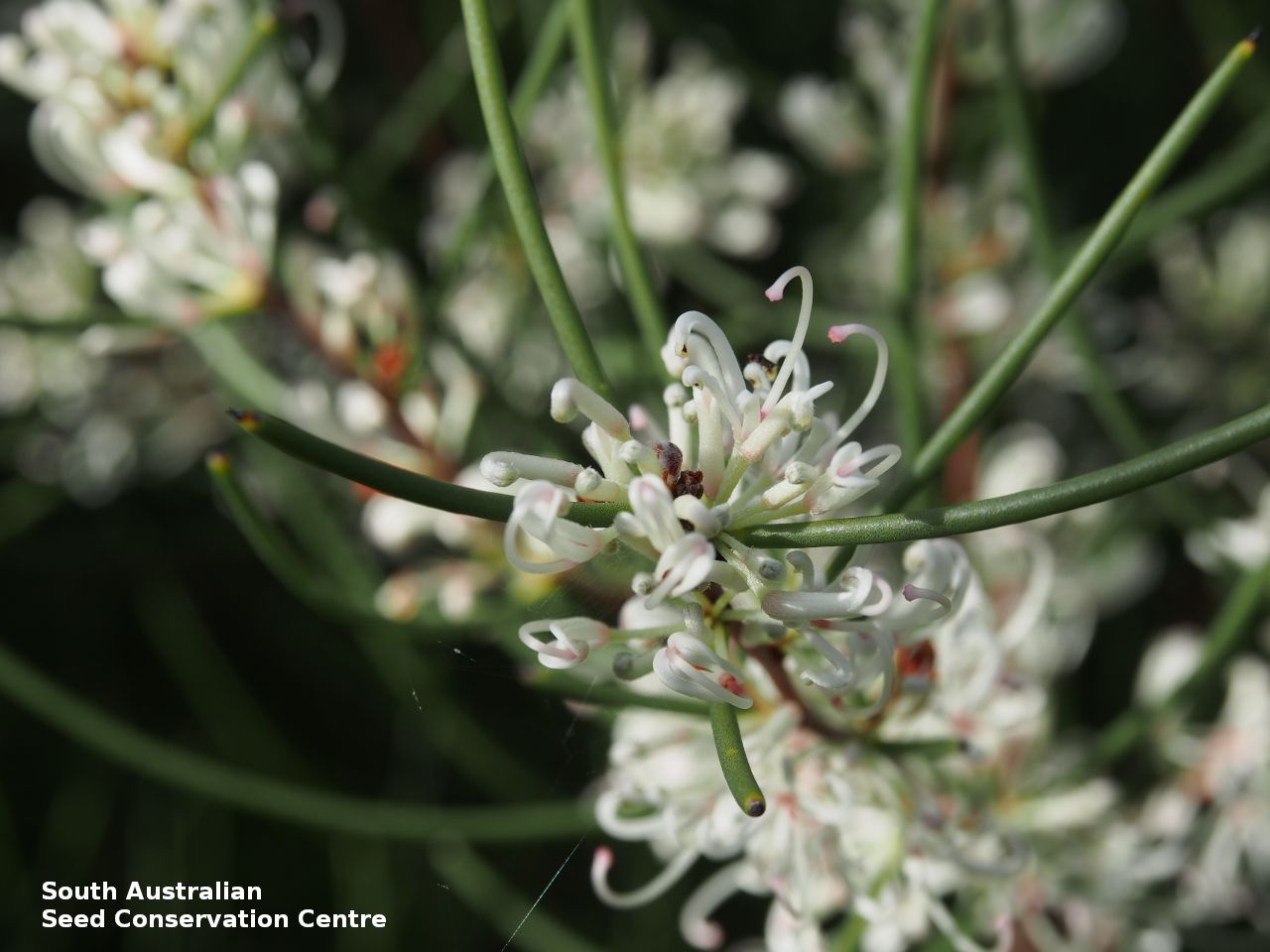
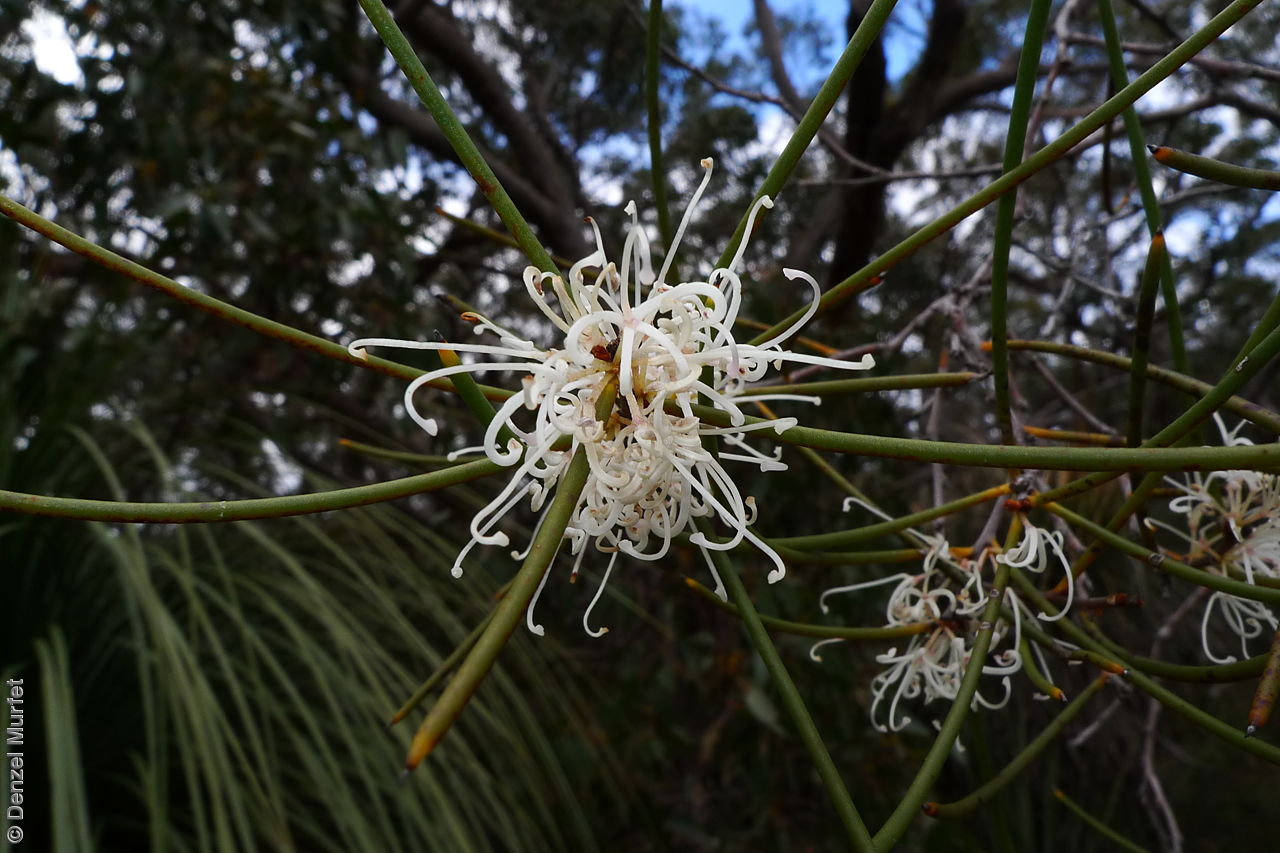
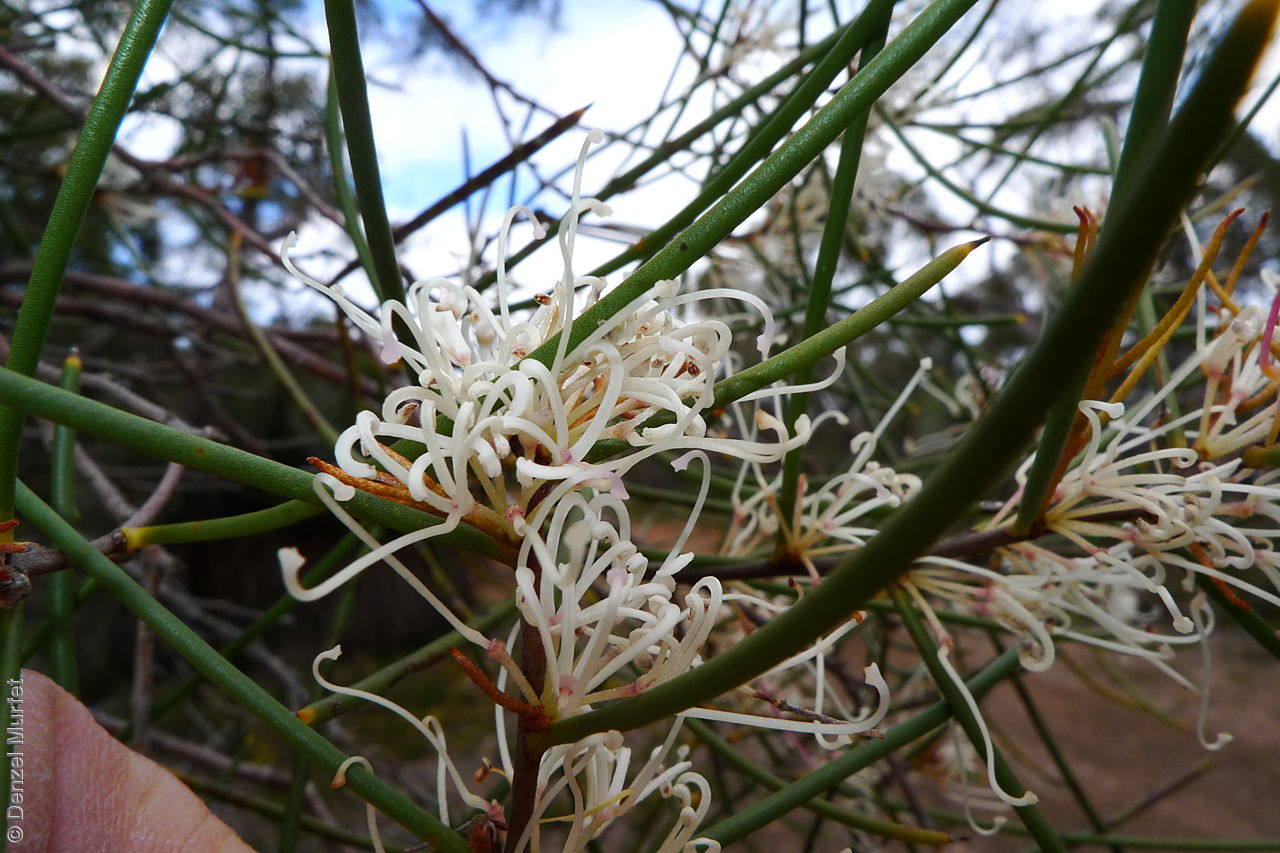
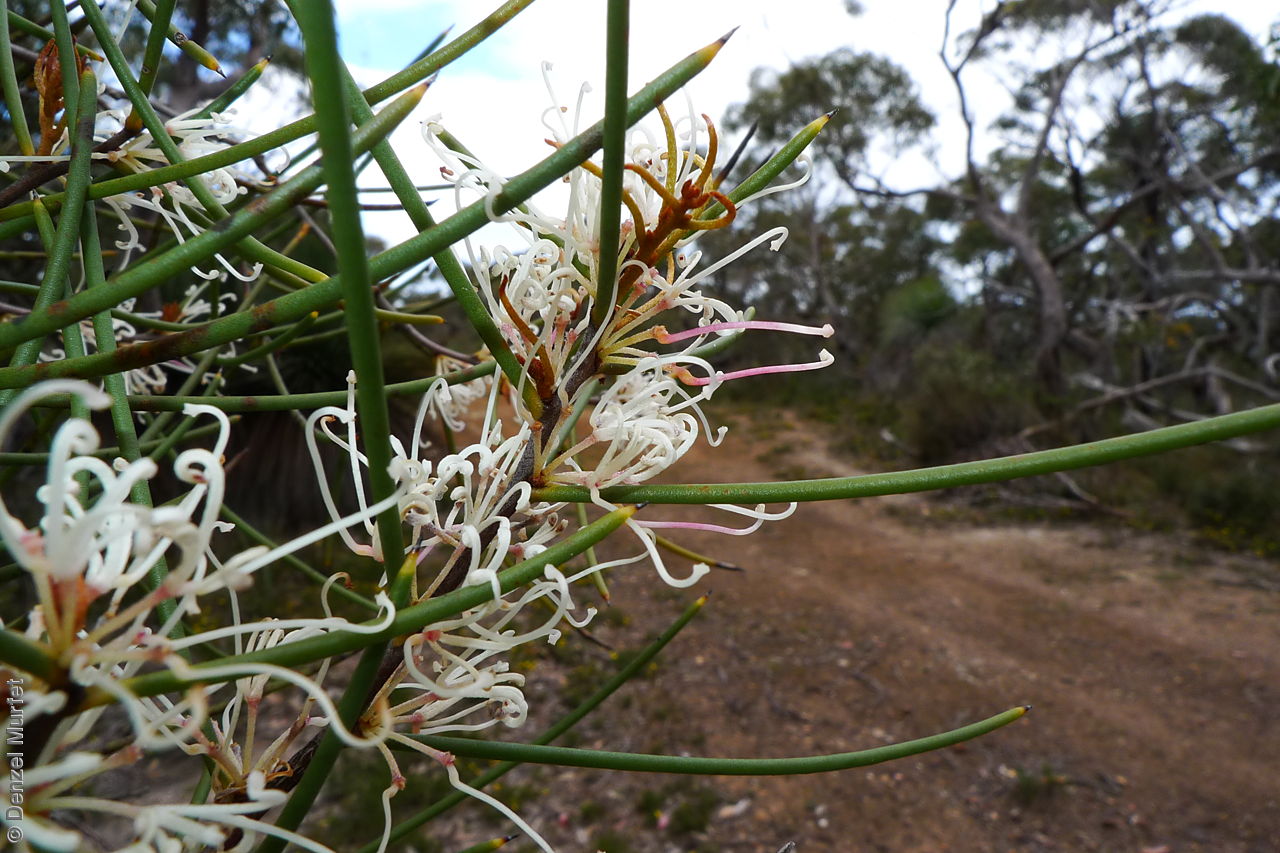
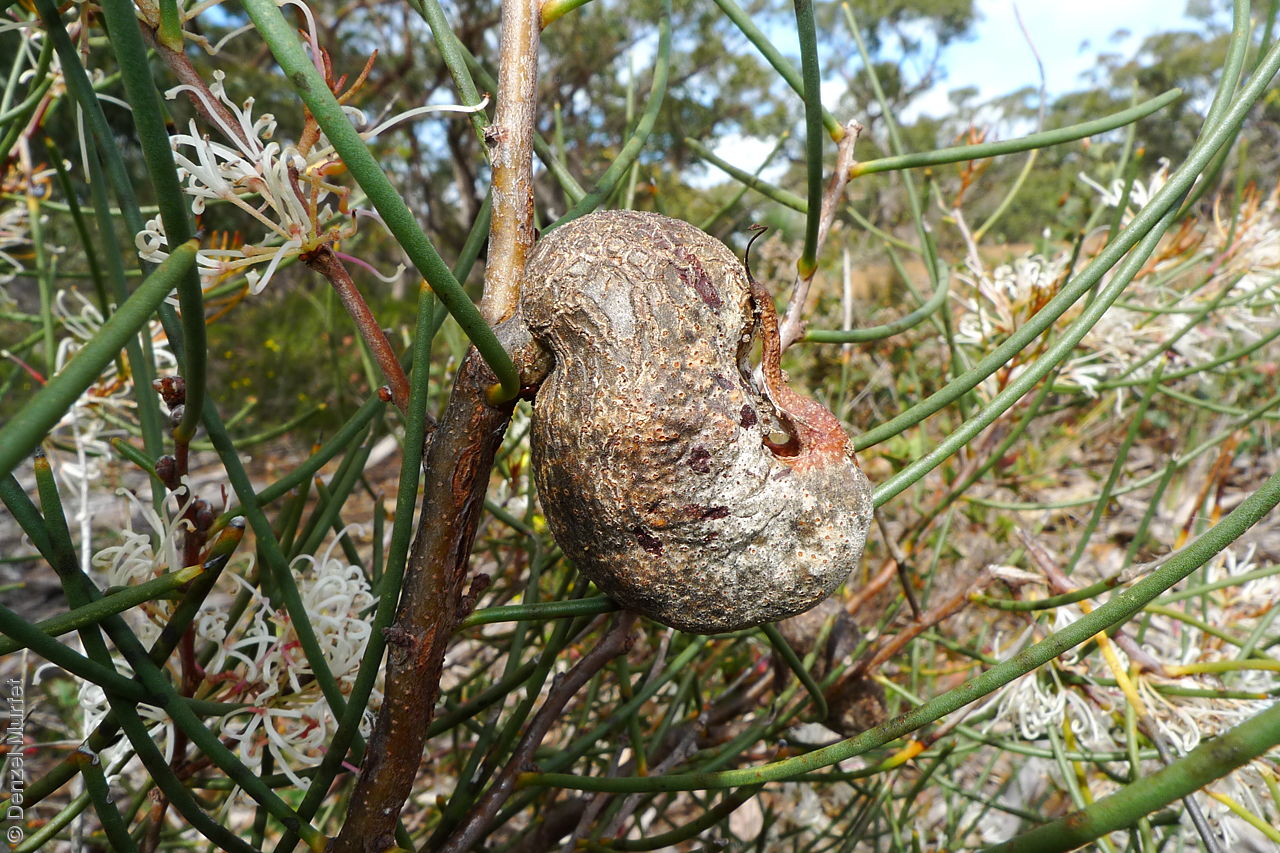
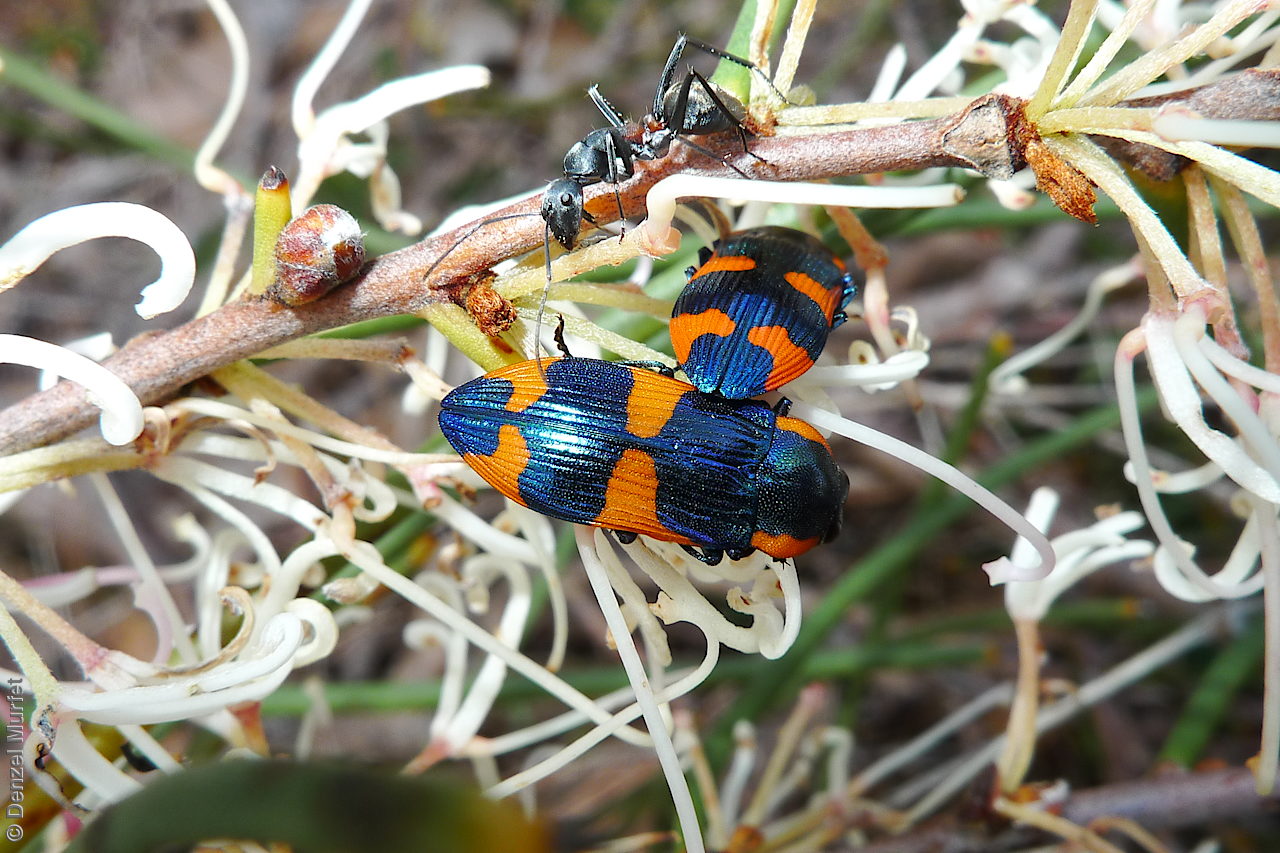
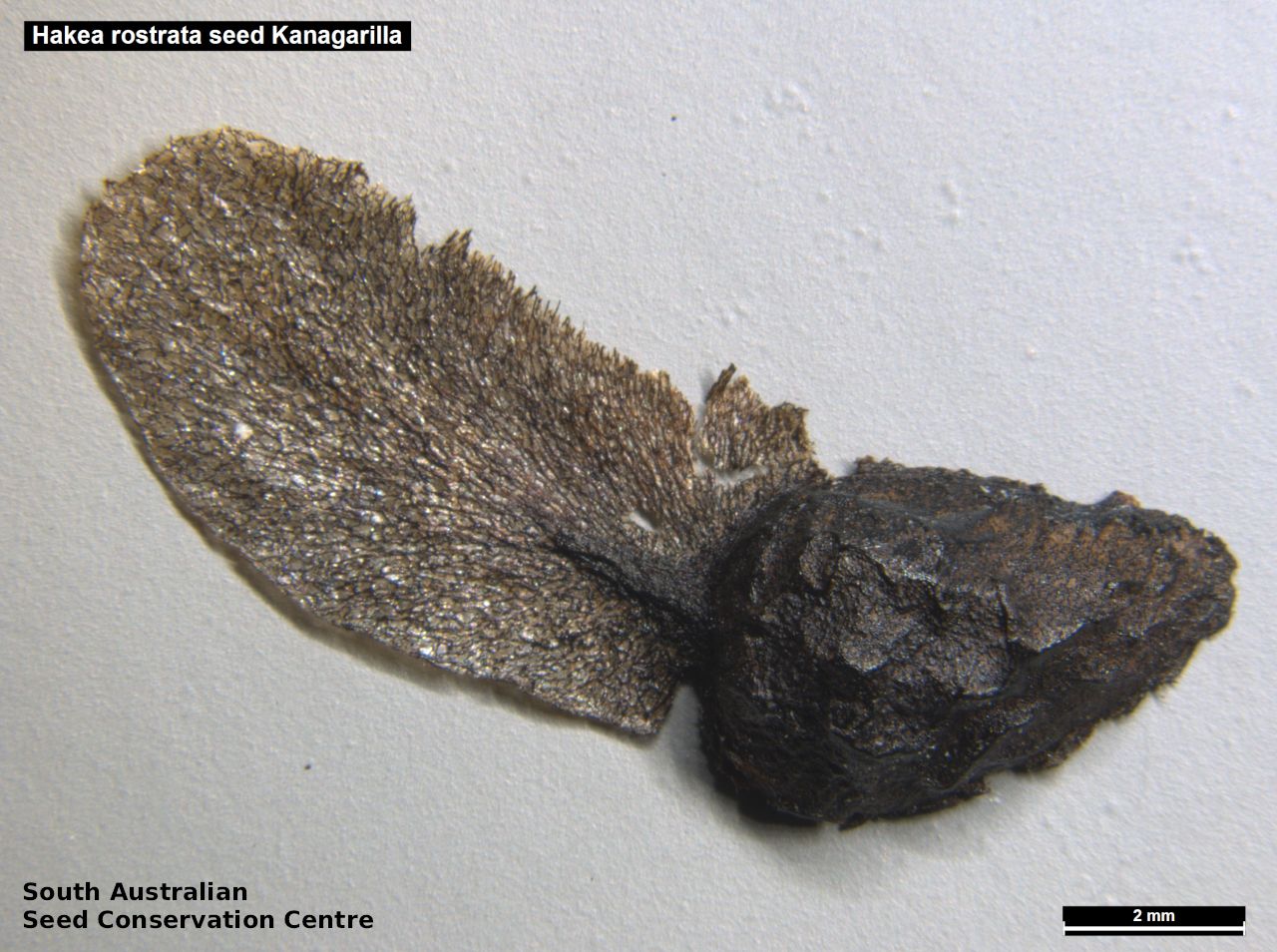

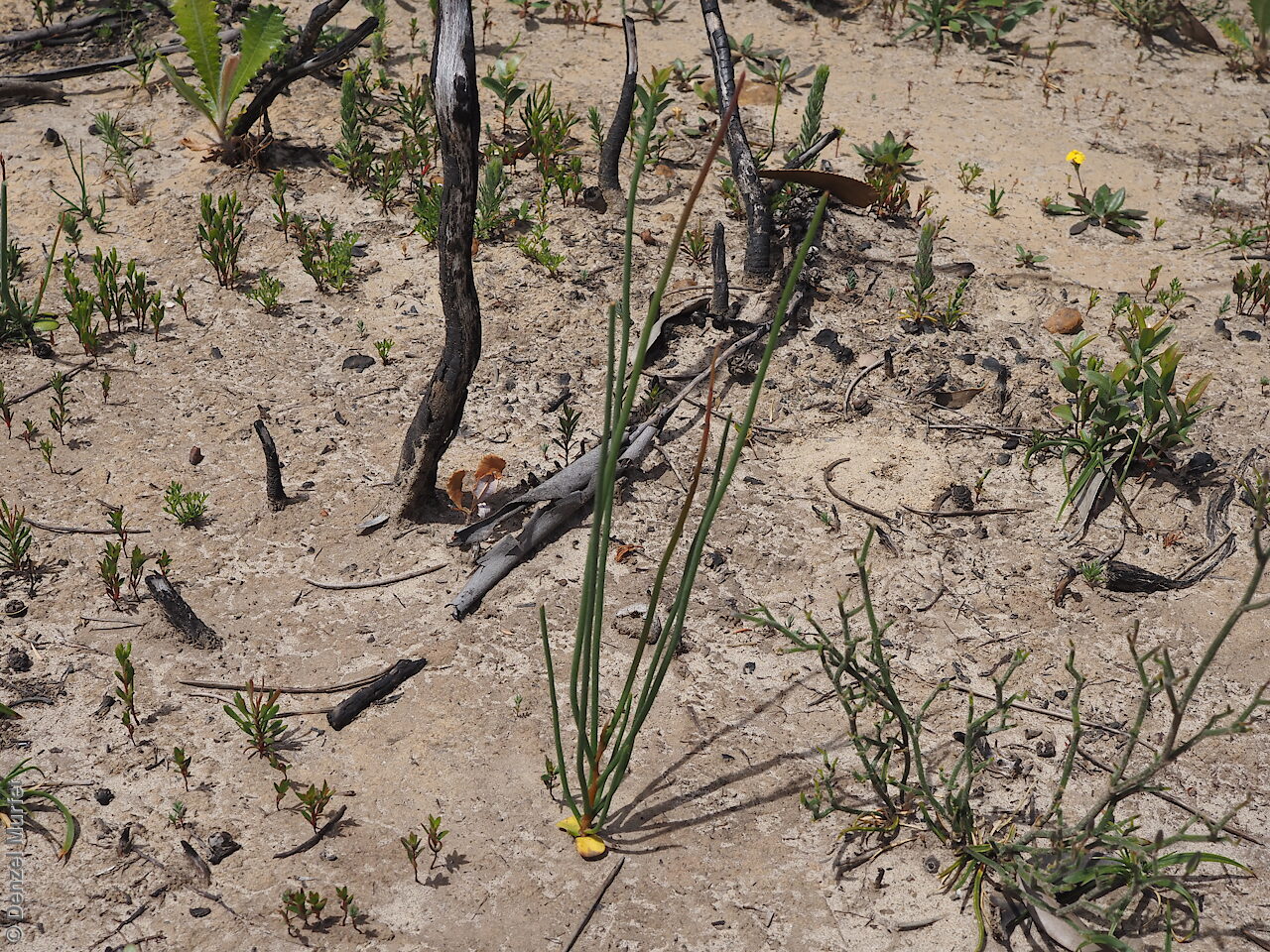

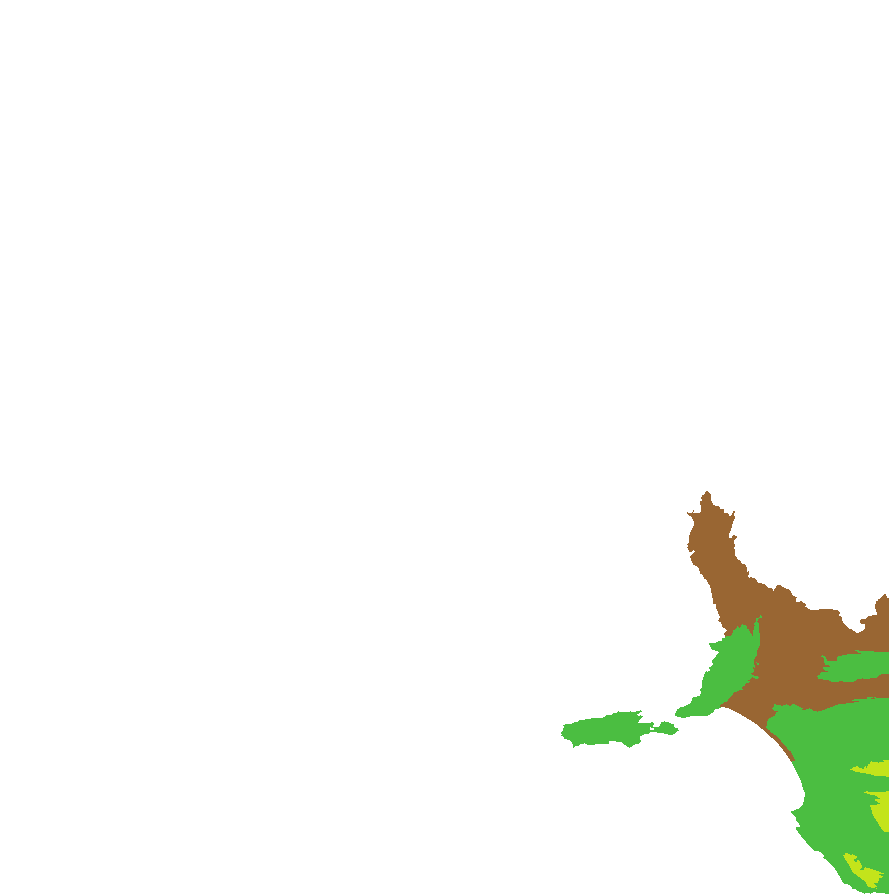
Botanical art
Prior names
Hakea pampliniana
Common names
Beaked Hakea
Turkey Gobblers
Etymology
Hakea named after Baron Christian Ludwig von Hake (1745-1818), a German horticulturalist and patron of botany. Rostrata from the Latin 'rostratus' meaning beaked or curved, referring to the pronounced recurvature of the beak of the fruit.
Distribution and status
Found in Mount Lofty Ranges, Kangaroo Island and the South-east in South Australia growing on a variety of soils, in heathlands and heathy woodlands. Also found in Victoria. Native. Common in South Australia. Common in Victoria.
Herbarium regions: Northern Lofty, Murray, Southern Lofty, Kangaroo Island, South Eastern, Green Adelaide
NRM regions: Kangaroo Island, Northern and Yorke, South Australian Murray-Darling Basin, South East
AVH map: SA distribution map (external link)
Plant description
Spreading or rounded shrub to 5 m tall with white hairs on branchlets and young leaves. Leaves terete, to 150 mm long and 1.7 mm wide with an ascending, pungent tip;, glaucous. Inflorescence axillary clusters with 1–10 white flowers. Flowering between July and November. Fruits are greyish-brown woody S-shaped fruit to 45 mm long and 32 mm wide, coarsely wrinkled with a long narrow beak. Fruit split into two, to reveal two seeds. Seeds are dark brown to black ovoid seed to 8 mm long and 6 mm wide (17 mm long and 8 mm wide including the wing that extend half way down one end sides of seed). Seed embryo type is investing.
Seed collection and propagation
Collect seeds between January and December. Collect mature woody fruits that are greyish-brown and not split. These will contain seeds. Place the woody fruit in a tray and leave to dry until it splits open. Fruits can be placed in the oven at low temperatures to achieve the same result. Place the dried fruit in a bucket and shake to dislodge the seeds from the valves. Separate the seeds from the fruit and store the seeds with a desiccant such as dried silica beads or dry rice, in an air tight container in a cool and dry place. Seeds are non-dormant, viable seed should germinate readily without pre-treatment.
| Location | No. of seeds (weight grams) | Number of plants | Date collected | Collection number Collection location | Date stored | % Viability | Storage temperature |
|---|---|---|---|---|---|---|---|
| MSB | 1,150 (23.65 g) | 50+ | 24-Jan-2007 | TST163 Kangaroo Island | |||
| MSB | 370 (7.6 g) | 50+ | 24-Jan-2007 | TST163 Kangaroo Island |
Number of plants: This is the number of plants from which the seeds were collected.
Collection location: The Herbarium of South Australia's region name.
% Viability: Percentage of filled healthy seeds determined by a cut test or x-ray.